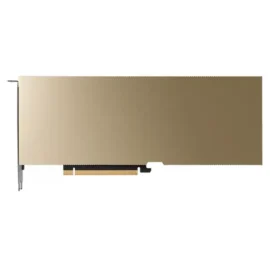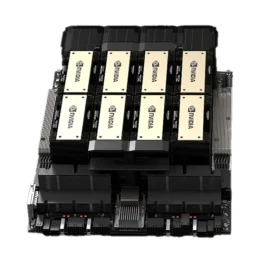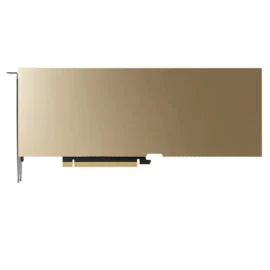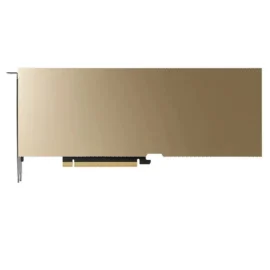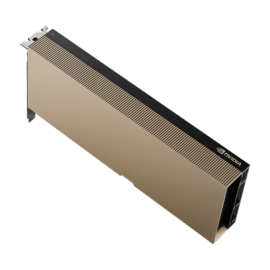Click Here to view deep learning gpu benchmark 2025
As artificial intelligence (AI) and machine learning (ML) continue to advance, the demand for powerful GPUs capable of handling complex computations has never been greater. Whether you’re training large-scale deep neural networks or deploying AI models for inference, choosing the right GPU is crucial. In 2025, several GPUs stand out as top choices for AI and deep learning workloads. Here’s a detailed look at the best options available.
Table of Contents
ToggleTop GPUs for AI & Machine/Deep Learning
1. NVIDIA H200: The Next Evolution in AI & Machine Learning
The NVIDIA H200, an advancement in the Hopper architecture, represents the ultimate in GPU technology for AI and machine learning. As the successor to the H100, the H200 pushes the boundaries further with enhanced performance and capabilities. When compared to the H100, the key difference comes in the massive increase in VRAM, with 141GB of HBM3e memory offering a substantial upgrade to the H100’s 80GB HBM3. The H200 is capable of 43% higher GPU memory bandwidth than the H100, with a peak of 4.8TB/s and 900GB/s of P2P bandwidth.
Key Features
- Performance Leap: The H200 delivers even greater AI performance with advanced tensor cores, surpassing the H100 and setting new standards in computational power.
- Memory Bandwidth: Utilizing the latest HBM3 memory, the H200 provides exceptional bandwidth, ideal for handling even larger datasets and more complex models than its predecessors.
- Efficiency: It maintains high energy efficiency, offering superior performance per watt, crucial for extensive AI data centers.
- Scalability: Enhanced NVLink support allows for even more seamless scaling with multiple GPUs, optimizing large-scale AI training.
- H200 (SXM) Performance: 1,979 TFLOPS FP16
Applications The H200 excels in:
- Deep Learning: Further reducing training times for massive neural networks.
- Natural Language Processing (NLP): Handling extensive text data more efficiently.
- Data Analytics: Processing complex queries on expansive datasets with ease.
Best For: Leading-edge AI and machine learning innovations.
2. NVIDIA H100: The New Standard for AI & Machine Learning
The NVIDIA H100, part of the NVIDIA Hopper architecture, represents the cutting edge of GPU technology, especially for AI and machine learning tasks. Designed to outperform its predecessors, the H100 sets new benchmarks in deep learning, data analytics, and scientific computing.
Key Features
- Massive Performance Leap: The H100 is engineered with advanced tensor cores that accelerate mixed-precision matrix calculations, crucial for AI and deep learning models. It significantly surpasses the A100 in raw computational power.
- Memory Bandwidth: Equipped with HBM3 memory, the H100 offers unprecedented memory bandwidth, making it ideal for handling large datasets and complex AI models. This ensures that even the most demanding neural networks can be processed without bottlenecks.
- Efficiency: Despite its immense power, the H100 is designed with energy efficiency in mind. It provides high performance per watt, making it a suitable choice for large-scale AI data centers where energy consumption is a critical concern.
- Scalability: The H100 supports NVLink, allowing multiple GPUs to work together seamlessly, further enhancing performance for large-scale AI training tasks.
- H100 (SXM) Performance: 1,979 TFLOPS FP16
Applications
The H100 is tailored for high-performance computing environments where AI and machine learning are at the forefront. It’s particularly effective in:
- Deep Learning: Accelerating training times for large neural networks.
- Natural Language Processing (NLP): Processing vast amounts of text data efficiently.
- Data Analytics: Handling complex queries on massive datasets with ease
Best For: organizations pushing the boundaries of AI and machine learning.
3. NVIDIA A100: The AI Powerhouse
The NVIDIA A100 is the pinnacle of performance in AI and deep learning, designed specifically for data centers and professional applications. Built on the Ampere architecture, the A100 offers exceptional computational power with its advanced Tensor Cores and extensive memory capacity.
- Ampere Architecture: The A100’s Ampere architecture introduces significant improvements over previous generations, including enhanced Tensor Cores that accelerate deep learning computations, resulting in faster training and inference times.
- High Memory Capacity: With up to 80 GB of HBM2e memory, the A100 can process large-scale models and datasets without hitting memory limitations.
- Multi-Instance GPU (MIG): The A100’s MIG technology allows a single GPU to be partitioned into multiple smaller instances, each with dedicated compute resources, enabling efficient use in multi-tenant environments.
- Performance: 624 TFLOPS FP16
Best For: Large-scale AI research, enterprise-level deep learning tasks, and data center applications.
4. NVIDIA L40: Professional AI and Visualization Powerhouse
The NVIDIA L40 GPU is a professional-grade GPU engineered for the most demanding AI, machine learning, and visualization tasks. Leveraging its advanced architecture, the L40 offers unmatched power for data scientists, researchers, and designers needing a reliable solution for complex computational workloads.
- Exceptional CUDA Cores: With 18,176 CUDA cores, the L40 delivers extraordinary processing power, ensuring it can handle intensive AI and deep learning operations with ease.
- High Memory Bandwidth: Equipped with a 1.7 TB/s memory bandwidth, the L40 supports rapid data throughput, essential for efficient handling of large datasets and real-time visualization.
- Professional-Grade Reliability: Unlike consumer GPUs, the L40 is built with enterprise-grade reliability and is optimized for high-performance environments, making it a perfect fit for commercial AI development and deployment.
FP16 Tensor Core performance: 181.05 TFLOPS
Best For: Professionals, research institutions, and organizations needing robust, high-performance GPU capabilities for advanced AI, machine learning, and 3D visualization projects.
5. NVIDIA T4 GPU (Turing Architecture)
The NVIDIA T4, introduced as part of the Turing architecture, brings remarkable versatility and efficiency to AI, deep learning, and machine learning applications. While the T4 is newer than some high-end options, its balanced performance makes it ideal for a wide range of use cases, from inference to training.
- Turing Architecture
The T4 is built on NVIDIA’s Turing architecture, featuring Tensor Cores designed for deep learning tasks. With optimizations for both AI inference and training, the T4 delivers an excellent performance-per-watt ratio. - Tensor Core Support
Equipped with Tensor Cores, the T4 accelerates AI workloads, particularly those related to machine learning inference, including image recognition, natural language processing, and more. - Memory Capacity
The T4 comes with 48 GB of GDDR6 memory, providing enough bandwidth for high-throughput AI applications. Its efficient memory usage ensures that even large datasets can be processed without bottlenecks. - Performance
With up to 65 TFLOPS for mixed-precision workloads
Best For
The NVIDIA T4 is an excellent choice for businesses and organizations that need an efficient, scalable solution for AI inference, edge computing, and high-performance computing (HPC) workloads, without the high cost of enterprise-grade GPUs. It’s particularly suited for cloud deployments and AI-driven services.
6. NVIDIA V100: The Legacy Choice
Although the NVIDIA V100 has been on the market since 2017, it remains a powerful option for AI and deep learning tasks. The V100, built on the Volta architecture, offers strong performance with its Tensor Cores and NVLink support.
- Volta Architecture: The V100’s architecture includes Tensor Cores specifically designed to accelerate deep learning, making it a reliable choice for training and inference tasks.
- NVLink Support: NVLink allows multiple V100 GPUs to work together, providing scalable performance for more demanding AI applications.
- Memory Capacity: Available with up to 32 GB of HBM2 memory, the V100 can handle large datasets and models effectively.
- Performance: 125 TFLOPS FP16
Best For: Enterprises and research institutions that need proven, reliable deep learning performance, especially in multi-GPU configurations.
Deep Learning GPUs Benchmarks
The authoritative data below is sourced from NVIDIA’s official website. H200, H100, A100, L40, T4, V100. If you’d like to explore more AI GPU models, check out our other blog post at: NVIDIA AI Chips List
NVIDIA H200 GPU Benchmarks
| Technical Specifications | H200 SXM | H200 NVL |
| FP64 | 34 TFLOPS | 30 TFLOPS |
| FP64 Tensor Core | 67 TFLOPS | 60 TFLOPS |
| FP32 | 67 TFLOPS | 60 TFLOPS |
| TF32 Tensor Core* | 989 TFLOPS | 835 TFLOPS |
| BFLOAT16 Tensor Core* | 1,979 TFLOPS | 1,671 TFLOPS |
| FP16 Tensor Core* | 1,979 TFLOPS | 1,671 TFLOPS |
| FP8 Tensor Core* | 3,958 TFLOPS | 3,341 TFLOPS |
| INT8 Tensor Core* | 3,958 TFLOPS | 3,341 TFLOPS |
| GPU Memory | 141GB | 141GB |
| GPU Memory Bandwidth | 4.8TB/s | 4.8TB/s |
| Decoders | 7 NVDEC, 7 JPEG | 7 NVDEC, 7 JPEG |
| Confidential Computing | Supported | Supported |
| Max Thermal Design Power (TDP) | Up to 700W (configurable) | Up to 600W (configurable) |
| Multi-Instance GPUs | Up to 7 MIGs @ 18GB each | Up to 7 MIGs @ 16.5GB each |
| Form Factor | SXM | PCIe |
| Interconnect | NVIDIA NVLink: 900GB/s, PCIe Gen5: 128GB/s | 2- or 4-way NVIDIA NVLink bridge: 900GB/s per GPU, PCIe Gen5: 128GB/s |
| Server Options | NVIDIA HGX™ H200 partner and NVIDIA-AI Certified Systems™ with 4 or 8 GPUs | NVIDIA MGX™ H200 NVL partner and NVIDIA-Certified Systems with up to 8 GPUs |
| NVIDIA AI Enterprise | Add-on | Included |
Note: The asterisk (*) indicates specifications with sparsity
NVIDIA H100 GPU Benchmarks
| Technical Specifications | H100 SXM | H100 NVL |
| FP64 | 34 teraFLOPS | 30 teraFLOPS |
| FP64 Tensor Core | 67 teraFLOPS | 60 teraFLOPS |
| FP32 | 67 teraFLOPS | 60 teraFLOPS |
| TF32 Tensor Core* | 989 teraFLOPS | 835 teraFLOPS |
| BFLOAT16 Tensor Core* | 1,979 teraFLOPS | 1,671 teraFLOPS |
| FP16 Tensor Core* | 1,979 teraFLOPS | 1,671 teraFLOPS |
| FP8 Tensor Core* | 3,958 teraFLOPS | 3,341 teraFLOPS |
| INT8 Tensor Core* | 3,958 TOPS | 3,341 TOPS |
| GPU Memory | 80GB | 94GB |
| GPU Memory Bandwidth | 3.35TB/s | 3.9TB/s |
| Decoders | 7 NVDEC, 7 JPEG | 7 NVDEC, 7 JPEG |
| Max Thermal Design Power (TDP) | Up to 700W (configurable) | 350-400W (configurable) |
| Multi-Instance GPUs | Up to 7 MIGs @ 10GB each | Up to 7 MIGs @ 12GB each |
| Form Factor | SXM | PCIe dual-slot air-cooled |
| Interconnect | NVIDIA NVLink: 900GB/s, PCIe Gen5: 128GB/s | NVIDIA NVLink: 600GB/s, PCIe Gen5: 128GB/s |
| Server Options | NVIDIA HGX H100 Partner and NVIDIA-Certified Systems™ with 4 or 8 GPUs | Partner and NVIDIA-Certified Systems with 1–8 GPUs |
| NVIDIA Enterprise | Add-on | Included |
Note: The asterisk (*) indicates specifications with sparsity
NVIDIA A100 GPU Benchmarks
| NVIDIA A100 Tensor Core GPU Specifications (SXM4 and PCIe Form Factors) | A100 80GB PCIe | A100 80GB SXM |
| FP64 | 9.7 TFLOPS | 9.7 TFLOPS |
| FP64 Tensor Core | 19.5 TFLOPS | 19.5 TFLOPS |
| FP32 | 19.5 TFLOPS | 19.5 TFLOPS |
| Tensor Float 32 (TF32) | 156 TFLOPS | 312 TFLOPS* |
| BFLOAT16 Tensor Core | 312 TFLOPS | 624 TFLOPS* |
| FP16 Tensor Core | 312 TFLOPS | 624 TFLOPS* |
| INT8 Tensor Core | 624 TOPS | 1248 TOPS* |
| GPU Memory | 80GB HBM2e | 80GB HBM2e |
| GPU Memory Bandwidth | 1,935GB/s | 2,039GB/s |
| Max Thermal Design Power (TDP) | 300W | 400W*** |
| Multi-Instance GPU | Up to 7 MIGs @ 10GB | Up to 7 MIGs @ 10GB |
| Form Factor | PCIe dual-slot air cooled or single-slot liquid cooled | SXM |
| Interconnect | NVIDIA® NVLink® Bridge for 2 GPUs: 600GB/s ** PCIe Gen4: 64GB/s | NVLink: 600GB/s PCIe Gen4: 64GB/s |
| Server Options | Partner and NVIDIA-Certified Systems™ with 1-8 GPUs | NVIDIA HGX™ A100-Partner and NVIDIA-Certified Systems with 4, 8, or 16 GPUs NVIDIA DGX™ A100 with 8 GPUs |
*With sparsity
** SXM4 GPUs via HGX A100 server boards; PCIe GPUs via NVLink Bridge for up to two GPUs
*** 400W TDP for standard configuration. HGX A100-80GB CTS (Custom Thermal Solution) SKU can support TDPs up to 500W
NVIDIA L40 GPU Benchmarks
| Technical Specifications | NVIDIA L40* |
| GPU Architecture | NVIDIA Ada Lovelace architecture |
| GPU Memory | 48GB GDDR6 with ECC |
| Memory Bandwidth | 864GB/s |
| Interconnect Interface | PCIe Gen4x16: 64GB/s bi-directional |
| CUDA Cores | 18,176 |
| RT Cores | 142 |
| Tensor Cores | 568 |
| RT Core performance TFLOPS | 209 |
| FP32 TFLOPS | 90.5 |
| TF32 Tensor Core TFLOPS | 90.5 |
| BFLOAT16 Tensor Core TFLOPS | 181.05 |
| FP16 Tensor Core | 181.05 |
| FP8 Tensor Core | 362 |
| Peak INT8 Tensor TOPS | 362 |
| Peak INT4 Tensor TOPS | 724 |
| Form Factor | 4.4″ (H) x 10.5″ (L) – dual slot |
| Display Ports | 4 x DisplayPort 1.4a |
| Max Power Consumption | 300W |
| Power Connector | 16-pin |
| Thermal | Passive |
| Virtual GPU (vGPU) software support | Yes |
| vGPU Profiles Supported | See Virtual GPU Licensing Guide† |
| NVENC I NVDEC | 3x I 3x (Includes AV1 Encode & Decode) |
| Secure Boot with Root of Trust | Yes |
| NEBS Ready | Level 3 |
| MIG Support | No |
| NVLink Support | No |
* Preliminary specifications, subject to change
** With Sparsity
† Coming in a future release of NVIDIA vGPU software.
NVIDIA T4 GPU Benchmarks
| GPU Architecture | NVIDIA Turing |
| NVIDIA Turing Tensor Cores | 320 |
| NVIDIA CUDA® Cores | 2,560 |
| Single-Precision | 8.1 TFLOPS |
| Mixed-Precision (FP16/FP32) | 65 TFLOPS |
| INT8 | 130 TOPS |
| INT4 | 260 TOPS |
| GPU Memory | 16 GB GDDR6 |
| GPU Memory Bandwidth | 300 GB/sec |
| ECC | Yes |
| Interconnect Bandwidth | 32 GB/sec |
| System Interface | x16 PCIe Gen3 |
| Form Factor | Low-Profile PCIe |
| Thermal Solution | Passive |
| Compute APIs | CUDA, NVIDIA TensorRT™, ONNX |
NVIDIA V100 GPU Benchmarks
| Specifications | V100 PCIe | V100 SXM2 | V100S PCIe |
| GPU Architecture | NVIDIA Volta | NVIDIA Volta | NVIDIA Volta |
| NVIDIA Tensor Cores | 640 | 640 | 640 |
| NVIDIA CUDA® Cores | 5120 | 5120 | 5120 |
| Double-Precision Performance | 7 TFLOPS | 7.8 TFLOPS | 8.2 TFLOPS |
| Single-Precision Performance | 14 TFLOPS | 15.7 TFLOPS | 16.4 TFLOPS |
| Tensor Performance | 112 TFLOPS | 125 TFLOPS | 130 TFLOPS |
| GPU Memory | 32 GB / 16 GB HBM2 | 32 GB HBM2 | 32 GB HBM2 |
| Memory Bandwidth | 900 GB/sec | 1134 GB/sec | 1134 GB/sec |
| ECC | Yes | Yes | Yes |
| Interconnect Bandwidth | 32 GB/sec | 300 GB/sec | 32 GB/sec |
| System Interface | PCIe Gen3 | NVIDIA NVLink™ | PCIe Gen3 |
| Form Factor | PCIe Full Height/Length | SXM2 | PCIe Full Height/Length |
| Max Power Consumption | 250 W | 300 W | 250 W |
| Thermal Solution | Passive | Passive | Passive |
| Compute APIs | CUDA, DirectCompute, OpenCL™, OpenACC® | CUDA, DirectCompute, OpenCL™, OpenACC® | CUDA, DirectCompute, OpenCL™, OpenACC® |
GeForce RTX high-performance series GPUs
The GeForce RTX high-performance series GPUs (such as the RTX 3090, RTX 4080, RTX 4090, RTX 5090, etc.) are primarily aimed at the gaming market but still offer sufficient CUDA cores and good memory bandwidth, making them suitable for entry-level or mid-range AI model training for projects. These GPUs support ray tracing technology, making them ideal for both graphic rendering and AI training. You can find the technical specifications for these GPUs at https://www.techpowerup.com/gpu-specs/.
How to Choose the Right GPU for AI Training
When it comes to AI training, the amount of VRAM determines whether the training can be done, while the performance level dictates how fast it will run. It’s important to note that GPUs from different generations cannot be directly compared in terms of performance.
Key parameters to consider when selecting a GPU
VRAM Size: Prioritize GPUs with 8GB or more of VRAM. This directly affects the size of the models and batch sizes that can be trained.
Performance Level: Choose based on your needs; the higher the performance, the better, but always consider cost-effectiveness.
Brand and After-Sales Service: Prefer well-known brands like ASUS, MSI, or Gigabyte. Alternatively, brands like Maxsun, Colorful, and Galaxy can also be considered. Be cautious when buying GPUs from other brands (brand suggestions are for reference, and users can select based on their actual needs).
Key Parameters to Check: GPU information can be viewed using tools like GPU-Z. Pay special attention to two parameters: Shaders and Memory Size. Shaders correspond to performance (i.e., the number of CUDA cores), while Memory Size is the amount of VRAM. Tools like GPU-Z can help check these.
Bus Width: Be aware that a bus width under 192 bits may cause transmission bottlenecks.
In addition to the above, the following aspects are also worth considering:
Cooling Performance: A good cooling system ensures long-term stability and performance.
Power Consumption and Power Supply Requirements: Make sure the system power supply can provide sufficient wattage and has the appropriate connectors.
Interface Compatibility: Check the compatibility of the GPU with the motherboard’s PCIe version and slot size.
Size and Space: Ensure the case has enough room for the GPU.
Multi-GPU Setup: Consider the need and compatibility for SLI or CrossFire configurations.
Budget and Cost-Effectiveness: Compare performance, price, and long-term usage costs.
Future Compatibility and Upgradability: Choose GPUs from manufacturers that provide strong support and regular driver updates.
Choose a suitable GPU based on your specific application and budget
Entry-Level
For beginners or small-scale projects, budget-friendly consumer-grade GPUs such as NVIDIA’s GeForce RTX 3060 or 3070 series are a good choice. Although primarily targeted at gamers, these GPUs still offer enough CUDA cores and good memory bandwidth for entry-level AI model training.
Mid-Level
For medium-sized projects that require higher computational power, GPUs like the NVIDIA RTX 3080, RTX 3090, or RTX 4090 are better choices. They offer more CUDA cores and larger memory capacities, which are necessary for training more complex models.
High-End and Professional-Level
For large-scale AI training tasks and enterprise-level applications, it is recommended to opt for professional GPUs like NVIDIA’s A100 or V100. These GPUs are designed specifically for AI training and high-performance computing (HPC), offering immense computational power, extremely high memory bandwidth and capacity, and support for mixed-precision training. While expensive, they provide unparalleled training efficiency and speed.
Conclusion
Choosing the right GPU for AI and machine/deep learning depends largely on the specific needs of your projects. As AI and machine learning continue to evolve, powerful GPUs are essential for handling complex computational tasks. In 2025, several standout GPUs provide exceptional performance for deep learning and AI workloads. The NVIDIA H200, building on the Hopper architecture, offers a massive performance leap, featuring 141GB of HBM3e memory. The H100, with its advanced tensor cores, remains a new standard for AI and machine learning tasks. The A100, with 80GB of memory and 624 TFLOPS of FP16 performance, continues to be a powerhouse for large-scale AI research.
For professionals, the NVIDIA L40 offers 18,176 CUDA cores and 181.05 TFLOPS of FP16 performance, excelling in AI and 3D visualization. The T4 GPU is an efficient, cost-effective choice, ideal for AI inference and edge computing. Although older, the V100 remains a reliable option for deep learning, with 125 TFLOPS of FP16 performance. Each GPU excels in specific areas, making them crucial tools for pushing the boundaries of AI and machine learning innovation.
In 2025, these GPUs represent the best options for powering AI and deep learning advancements, each catering to different needs and budgets. Whether you’re an individual researcher, a large enterprise, or somewhere in between, there’s a GPU on this list that will meet your demands.

